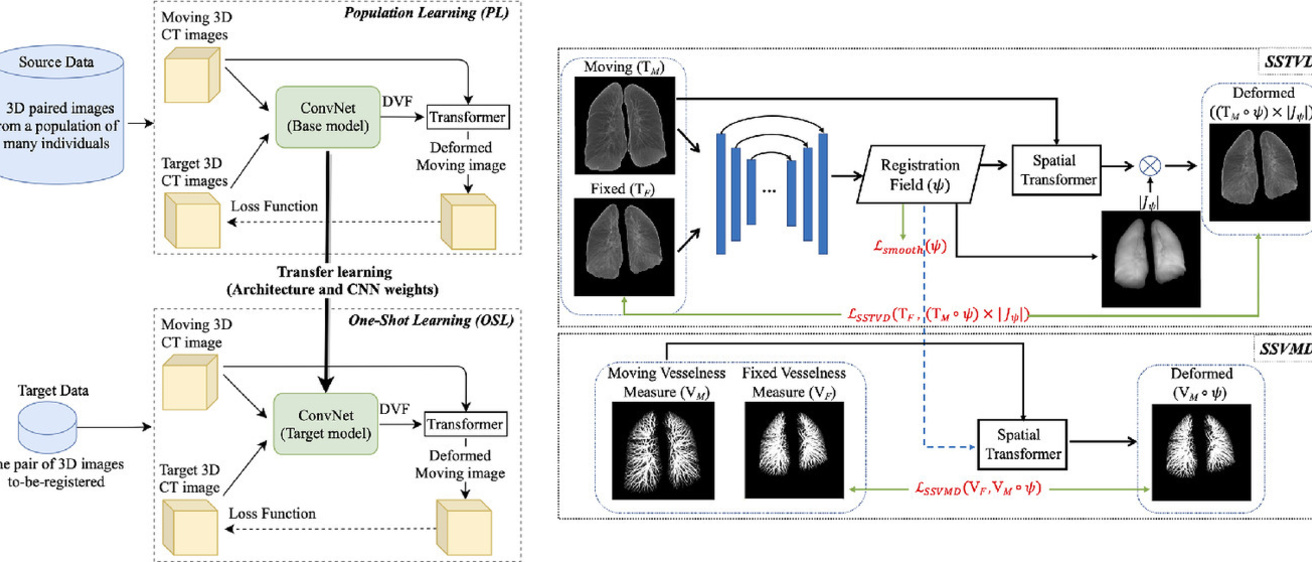Di Wang's work on lung image registration was just published in Medical Image Analysis: PLOSL: Population Learning Followed by One Shot Learning Pulmonary Image Registration Using Tissue Volume Preserving and Vesselness Constraints.
Abstract: This paper presents the Population Learning followed by One Shot Learning (PLOSL) pulmonary image registration method. PLOSL is a fast unsupervised learning-based framework for 3D-CT pulmonary image registration algorithm based on combining population learning (PL) and one-shot learning (OSL). The PLOSL image registration has the advantages of the PL and OSL approaches while reducing their respective drawbacks. The advantages of PLOSL include improved performance over PL, substantially reducing OSL training time and reducing the likelihood of OSL getting stuck in local minima. PLOSL pulmonary image registration uses tissue volume preserving and vesselness constraints for registration of inspiration-to-expiration and expiration-to-inspiration pulmonary CT images. A coarse-to-fine convolution encoder-decoder CNN architecture is used to register large and small shape features. During training, the sum of squared tissue volume difference (SSTVD) compensates for intensity differences between inspiration and expiration computed tomography (CT) images and the sum of squared vesselness measure difference (SSVMD) helps match the lung vessel tree. Results show that the PLOSL (SSTVD+SSVMD) algorithm achieved subvoxel landmark error while preserving pulmonary topology on the SPIROMICS data set, the public DIR-LAB COPDGene and 4DCT data sets.
